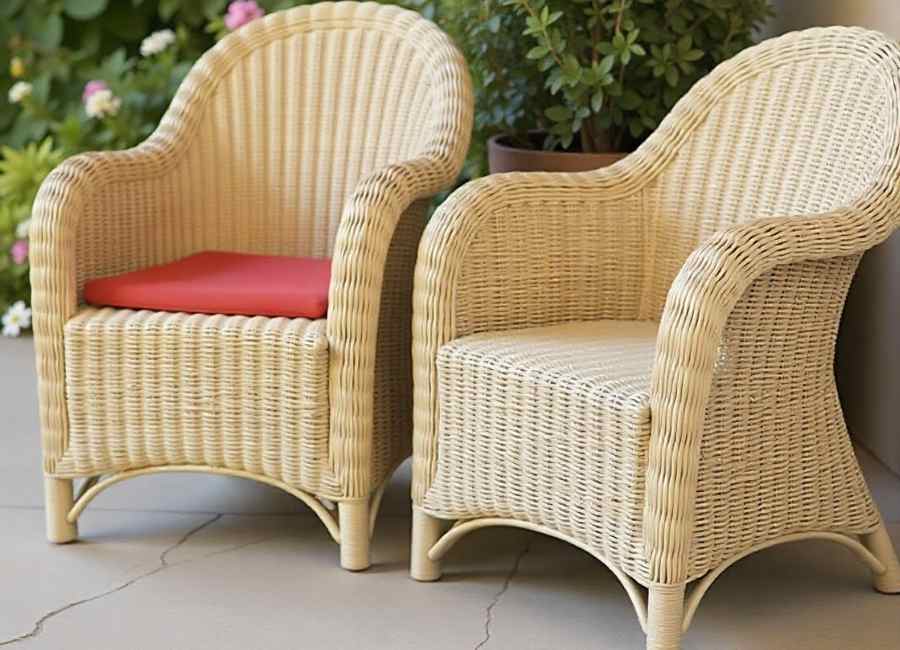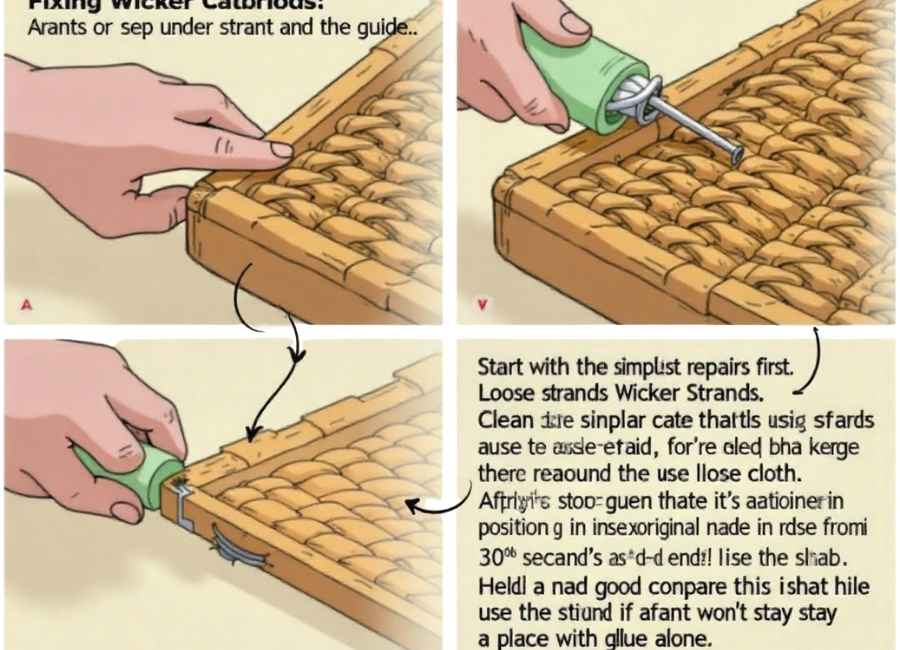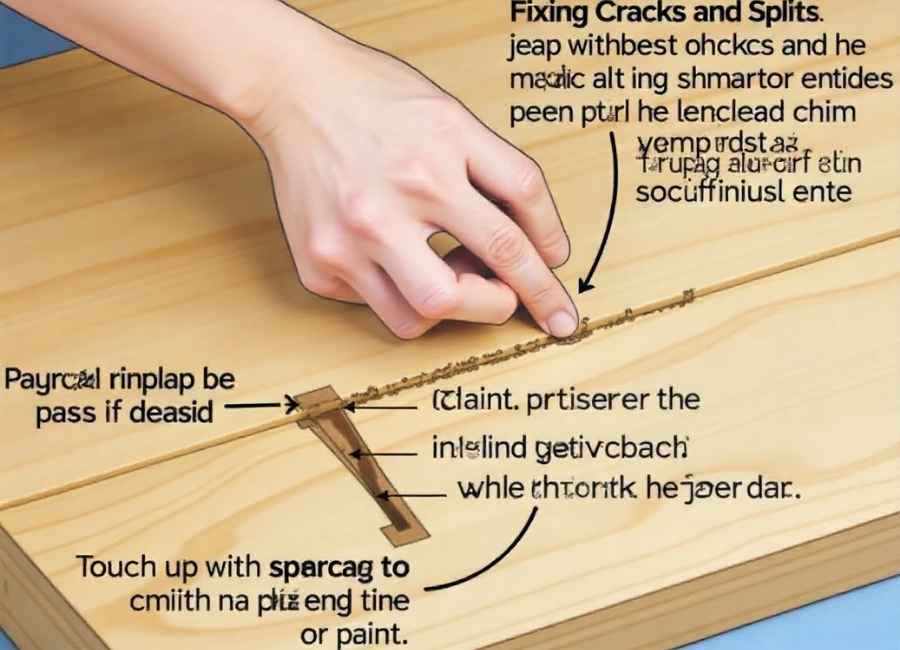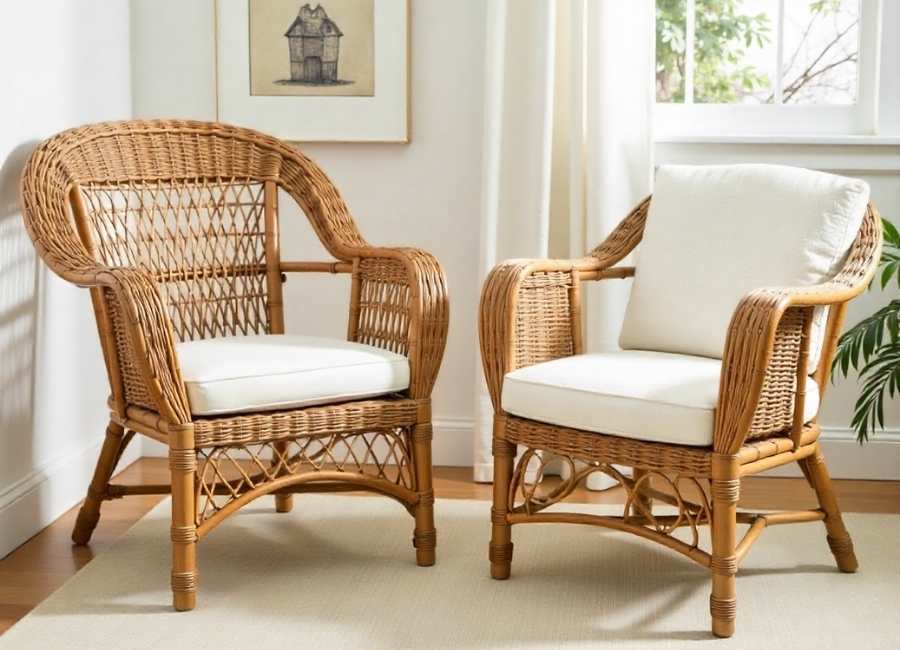Wicker furniture adds charm and elegance to any home, but it won’t last forever without proper care. Whether your favourite wicker chair has loose strands, broken weaves, or faded colour, you can restore it to its original beauty with the right techniques and tools.
This guide shows you exactly how to fix common wicker furniture problems. You’ll learn step-by-step repair methods, discover which tools work best, and understand when to attempt repairs yourself versus when to call a professional. By the end, you’ll have the knowledge to extend your wicker furniture’s lifespan and save money on replacements.
Common Wicker Furniture Problems

Wicker furniture faces several typical issues over time. Understanding these problems helps you choose the right repair approach.
Loose or Broken Strands
The most frequent problem is loose wicker strands that have come unwoven from the frame. This happens due to regular use, weather exposure, or natural ageing of the material.
Faded or Discoloured Finish
UV rays and moisture cause wicker to lose its original colour. (How to Protect Outdoor Wicker Furniture | 10 Easy Methods, 2025) The finish may appear dull, patchy, or completely worn away in high-contact areas.
Sagging Seats and Backs
Wicker seats often develop sags when the weave stretches or support strands break under repeated weight.
Cracked or Split Pieces
Natural materials like rattan can crack when they dry out completely. (How to maintain wicker furniture and keep it hydrated, 2023) Synthetic wicker may split at stress points or connection areas. (How do you restore wicker garden furniture?, n.d.)
Missing Sections
Sometimes entire sections of weaving come loose or break away, leaving gaps in the furniture’s structure.
Essential Tools and Materials

Gather these supplies before starting any wicker repair project:
Basic Tools
- Small screwdriver or awl
- Sharp scissors or craft knife
- Needle-nose pliers
- Fine-grit sandpaper (220-grit)
- Clean cloths and rags
Repair Materials
- Replacement wicker strands (match your furniture’s material and colour)
- Wood glue or strong craft glue
- Small nails or staples
- Wire (for reinforcement)
Finishing Supplies
- Primer suitable for your wicker type
- Paint or stain to match your furniture
- Clear protective finish or polyurethane
- Brushes and foam applicators
Step-by-Step Repair Methods

Fixing Loose Wicker Strands
Start with the simplest repairs first. Loose strands often just need reattaching to the frame.
- Clean the area around the loose strand with a damp cloth.
- Apply a small amount of glue to the loose end.
- Press the strand back into its original position.
- Hold firmly for 30 seconds to ensure good contact.
- Use a small nail or staple if the strand won’t stay in place with glue alone.
For strands that have pulled completely free, weave them back through the existing pattern before securing with glue.
Replacing Broken Strands
When strands are too damaged to repair, replacement is necessary.
- Remove the damaged strand carefully to avoid disturbing the surrounding weave.
- Measure the length needed for the replacement strand.
- Cut your replacement material slightly longer than needed.
- Weave the new strand following the existing pattern.
- Secure both ends with glue and allow them to dry completely.
- Trim excess length once the glue has cured.
Match the replacement material as closely as possible to maintain a consistent appearance.
Repairing Sagging Seats
Sagging requires reinforcing the underlying support structure.
- Turn the furniture upside down to access the underside.
- Identify loose or broken support strands that run perpendicular to the weave.
- Add new support strands by weaving them through the existing pattern.
- Pull tight and secure at both ends with glue and small fasteners.
- Test the repair by gently pressing on the seat surface.
Multiple support strands may be needed for heavily sagged areas.

Fixing Cracks and Splits
Small cracks can often be repaired without replacing entire sections.
- Clean debris from the crack with compressed air or a small brush
- Apply wood glue deep into the crack using a small applicator.
- Clamp or tape the crack closed while the glue dries.
- Sand lightly once dry to smooth any raised glue.
- Touch up with matching stain or paint.
For larger splits, you may need to reinforce with small pieces of wire worked into the weave.
Refinishing Wicker Furniture
Once repairs are complete, refinishing restores the original appearance.
Preparation Steps
- Clean thoroughly with mild soap and water.
- Allow to dry completely (24-48 hours for natural materials)
- Sand lightly to remove the old finish and create good adhesion
- Remove all dust with a tack cloth.
Applying New Finish
- Prime if needed (especially when changing colours significantly)
- Apply thin, even coats of paint or stain.
- Work finishes into all crevices using a small brush.
- Allow proper drying time between coats.
- Apply a protective clear coat to outdoor furniture.
Use spray application for the most even coverage on complex wicker patterns. (How to Paint Wicker Furniture: Step-by-Step Guide, n.d.)
When to Call a Professional
Some wicker furniture problems exceed typical DIY capabilities.
Structural Damage
If the main frame is cracked or joints are loose, professional repair ensures safety and longevity.
Extensive Reweaving
Large sections of missing weave require specialised skills and tools to match existing patterns exactly.
Antique or Valuable Pieces
High-value wicker furniture should be restored by experienced professionals to maintain its worth.
Time and Skill Constraints
Complex repairs can take many hours. Professional repair may be more cost-effective than investing your time.
Maintenance Tips for Long-Lasting Results
Proper care prevents many common wicker problems.
Regular Cleaning
- Vacuum weekly to remove dust and debris
- Wipe with a damp cloth monthly.
- Deep clean annually with a mild soap solution
Protection from Elements
- Keep indoor furniture away from heat sources.
- Use furniture covers for outdoor pieces.
- Apply protective finish every 2-3 years. (How To Take Care Of Outdoor Wicker Furniture, n.d.)
Proper Storage
- Store outdoor furniture in dry, well-ventilated locations during the winter.
- Avoid stacking pieces directly on top of each other.
- Maintain consistent humidity levels for natural wicker. (Tips for Maintaining and Caring for Wicker Furniture, n.d.)
Make Your Wicker Furniture Last
Fixing wicker furniture doesn’t require expensive tools or professional expertise. Most repairs employ simple techniques and readily available materials. Address small problems before they escalate into major issues.
Clean your wicker furniture regularly and address loose strands immediately. Apply protective finishes to prevent UV damage and moisture problems. Store outdoor pieces properly during harsh weather.
Your wicker furniture can provide years of comfortable use with proper repair and maintenance. Begin with the easiest repairs to build confidence, then tackle more complex problems as your skills develop.











